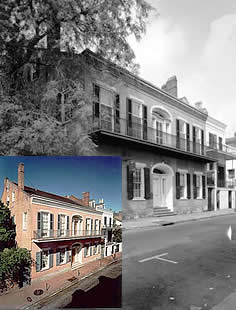
 |
||||||




"Before any historic
preservation project is begun, a number of fundamental decisions need
to be made. How will the property be used? Will the property be restored
to its original condition or rehabilitated for contemporary use? How can
the significant architectural and historical features of the building
be preserved? What steps need to be taken…Although 'rehabilitation'
and 'restoration' might sound alike, the end result is quite different."
From Downtown Moultrie Design Guidelines, Moultrie
Georgia, Moultrie-Colquitt Historic Preservation Commission, The Jaeger
Company, May, 2000.
Rehabilitation is one of four work approaches in The Secretary of the Interior's Standards for the Treatment of Historic Properties with Guidelines for Preserving, Rehabilitating, Restoring, and Reconstructing Historic Buildings. Without question, rehabilitation—the only approach that includes alterations and additions for a contemporary use—is most frequently applied to commercial and residential buildings in historic districts. Having said that, here is an important question.
Is it all rehab? The answer is "no." If a historic building will be preserved, restored, or reconstructed, you want to be sure your work fits time and place by applying the most appropriate set of Standards, not simply using the Standards for Rehabilitation as a "catch-all." Each of the four treatments has a different relationship to the historical timeline and a different scope of work, as explained here:
![]() For
example, if you want to stabilize and preserve a historic building to
keep it the way it looks now, you use the Standards for Preservation.
For
example, if you want to stabilize and preserve a historic building to
keep it the way it looks now, you use the Standards for Preservation.
![]() If
you want to update a building for a continuing or new use through repair,
alterations, and additions you use the Standards for Rehabilitation.
If
you want to update a building for a continuing or new use through repair,
alterations, and additions you use the Standards for Rehabilitation.
![]() If
you want to backdate it consistently to an earlier period by removing
later features, you use the Standards for Restoration.
If
you want to backdate it consistently to an earlier period by removing
later features, you use the Standards for Restoration.
![]() If
you want to reconstruct a historic building that has vanished, you use
the Standards for Reconstruction.
If
you want to reconstruct a historic building that has vanished, you use
the Standards for Reconstruction.
NOTE: Print all of Section 'd' in PDF format.
---------------------------------